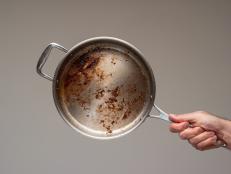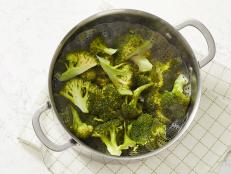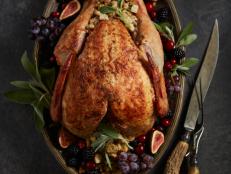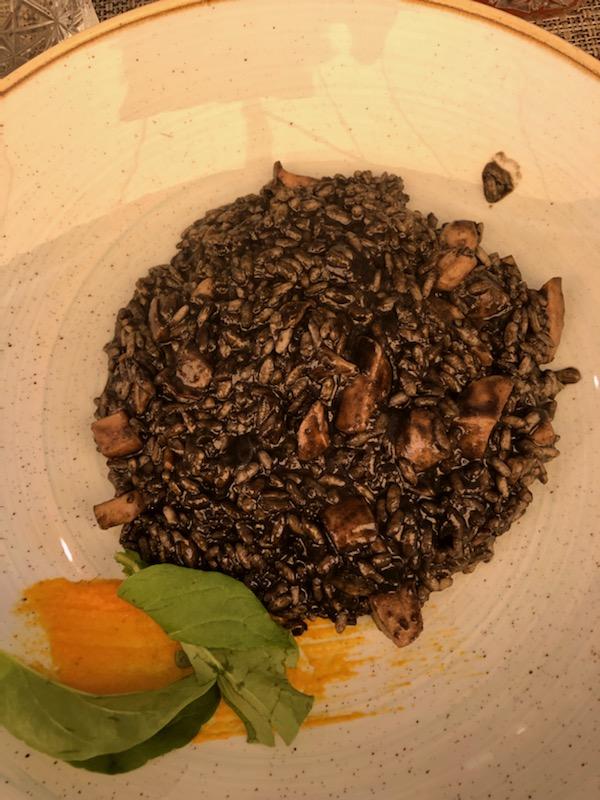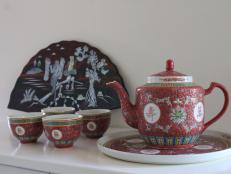How I Lost – and Found – My Indian Roots in Houston
As an Indian-born immigrant in Texas, the elementary school cafeteria and Houston’s booming culinary scene turned me into a voracious food writer. But to my surprise, it also helped me rediscover my culture.
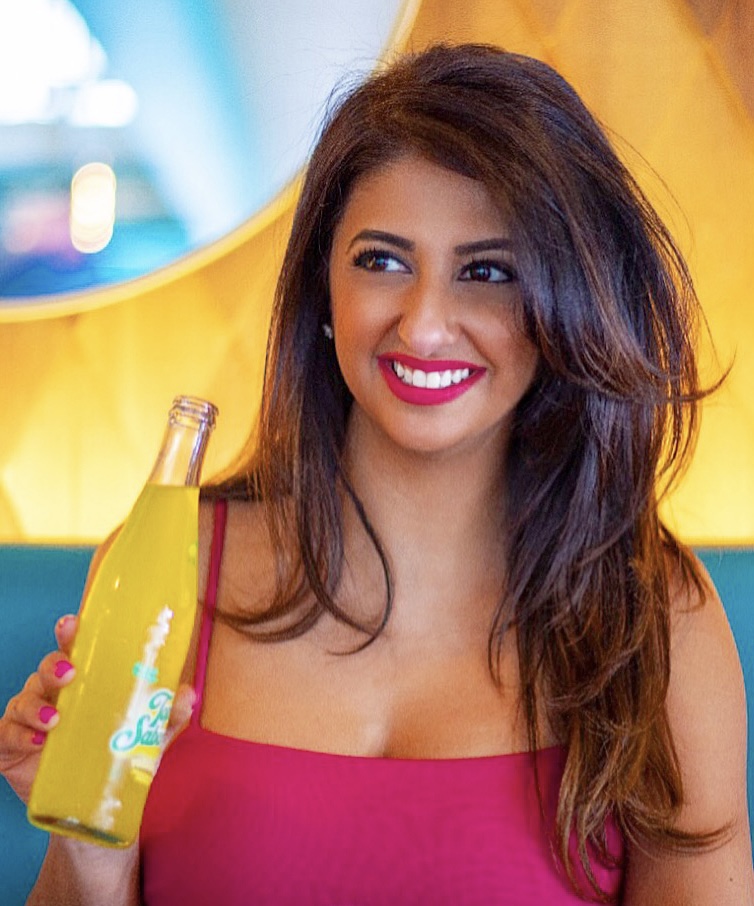
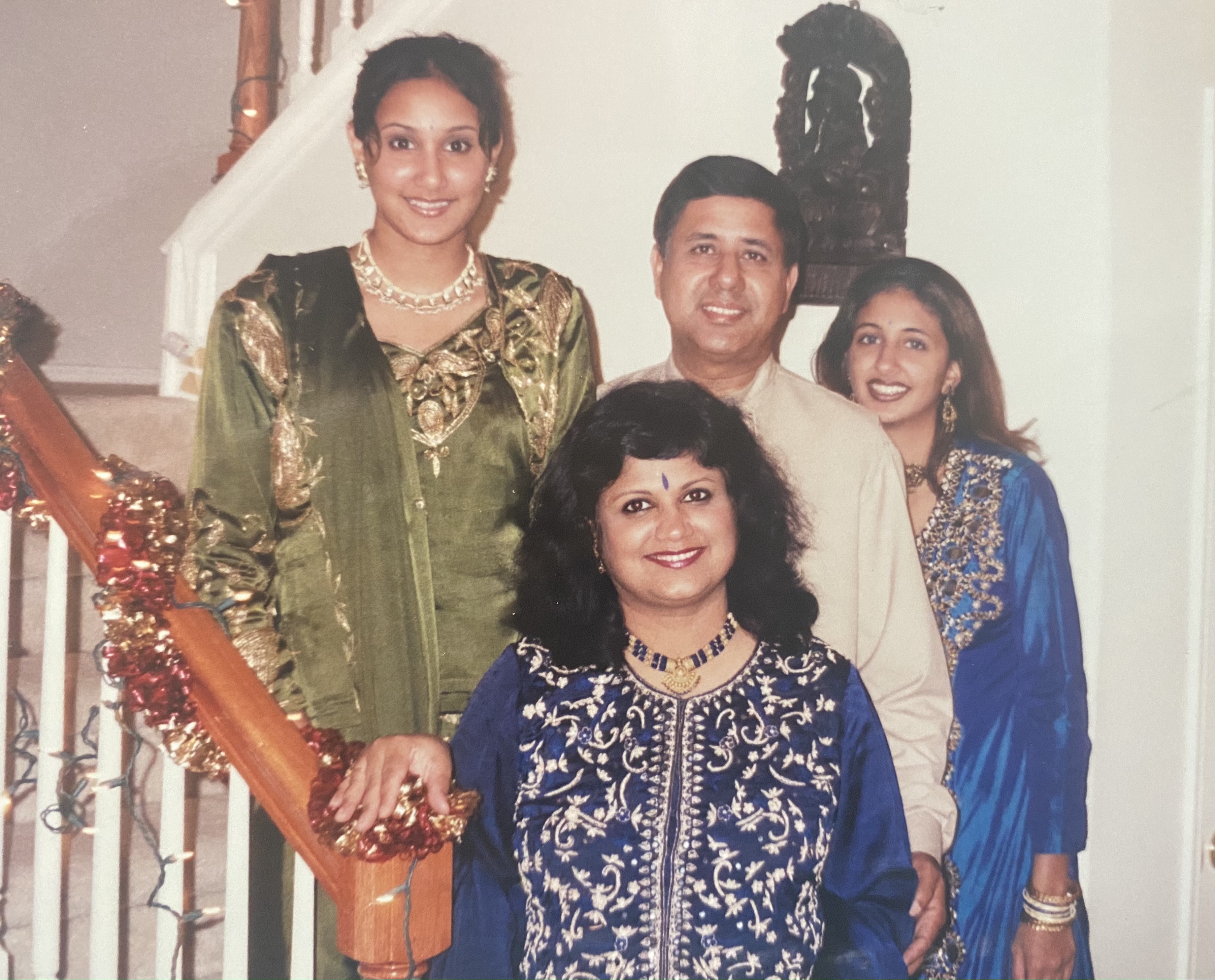
Courtesy of Megha McSwain
Few things in life offer the comfort of a homecooked meal made lovingly by your mother. I know this now, at 38 years old —but family dinners circa 1988 were a different story.
In a small Houston apartment, at a table set routinely by my younger sister and I, dinner was served at 7 pm. From our galley kitchen, my mother would emerge with platters of aromatic Basmati rice, piping hot curry and mixed vegetables spiced with cumin and coriander. Curries were ever-changing, from creamy and meat-filled to brothy with peas and egg, and some evenings handmade rotis would stand in for rice. Despite the mouthwatering bounty presented each night, I found myself unimpressed and fussy during meals. Why couldn’t we eat spaghetti or fried chicken like everyone else?
At the time, my parents and I were “Newstonians” — a term affectionately coined for Houston newbies — but we had not arrived from out of state; we traveled halfway around the world from Mumbai, India. My father had decided we’d embark on the journey to achieve the “American dream,” following the lead of his older brother, an oncologist who chose to settle in Houston for its world-renowned medical center. In their 20s, with two young children to care for, my parents were restarting their lives. They had completed their formal education in India, but re-enrolled in American universities and worked towards securing jobs which would allow us to gain U.S. citizenship. During this largely uncertain time, they found solace in forming a strong foundation for our family, built upon honoring Indian culture and traditions in our home. This began with food.
With guidance from my uncle, my parents familiarized themselves with the many Indian markets in town. Little India, a tightly packed cluster of Indian-owned shops, clothing boutiques and restaurants (known today as the Mahatma Gandhi District) was popular among Indian immigrants, and we would visit weekly. My mother would roam the aisles of India Grocers and stock up on spices, curry powders and fresh produce. At the holidays — like Diwali, the Hindu new year — she would pick out boxes of mithai, colorful sweets made of butter, sugar and nuts, to gift to friends. And on the rare occasion that we would splurge at a restaurant, it would be at one of Little India’s hidden gems. My father discovered Anand Bhavan (called Shiv Sagar today), a budget-friendly vegetarian café which served all the popular Indian street eats he and my mother had grown up on — spiced potato-stuffed dosas, chaat, samosas and kulfi ice-cream. It became a favorite for my parents, and we would frequent often. Little India was a source of comfort in a big way.

Courtesy of Megha McSwain
While my parents slowly assimilated to life in America, I made it a point to learn as much as I could, as fast as I could. I spoke only Hindi when I arrived in Houston at age 3, and when enrolled in public school, I was unable to communicate with my English-speaking teachers, nor did I understand the lessons. I was picked on by other students, and I retreated within myself, relying on my parents and our trusty television to learn the language. As children do, I soaked in everything like a sponge. My mother, like most 20-somethings in America in the late ‘80s, thrived on MTV. The network was a constant source of learning in our home. My sister and I would sing along to The Bangles, mimic the funky outfits of iconic pop stars like Debbie Gibson and Paula Abdul and perform choreographed dances in the living room nightly. In no time at all, I was speaking English fluently, without any trace of an Indian accent, and completely shedding the knowledge of my native tongue. In this transformative time of my life, the only thing that mattered was fitting in.
As I made friends with the children in our apartment complex, I was quick to realize the differences among us, specifically when it came to food. While they spoke of baking cookies or making homemade pizza with their parents, I didn’t share my experiences of hand-rolling rotis. After all, who would know what a roti was?
At school, as I unenthusiastically pulled out homemade things from my neon orange New Kids on the Block lunchbox, I observed my fellow students emerging from the cafeteria line with neatly compartmentalized lunch trays, revealing items that ignited my curiosity. I pleaded with my father to allow me to buy lunch at school too, and he soon shelled out the $1.10 so that I could do so. The foodie flood gates had opened. Each afternoon, I was thrilled to journey through the lunch line and experience hamburgers with cheese and pickles, spaghetti with meat sauce and fish sticks with corn and green beans. It wasn’t a world-class buffet, but for a young, curious “Newstonian” like me, it was an awakening.
The years went by and Houston became home. As a family, we ventured out to every pocket of the city, from visiting the NASA Johnson Space Center to attending the one and only Houston Livestock Show and Rodeo. One of my favorite excursions was exploring Chinatown. My mother, who took a liking to Chinese food upon moving to Houston, discovered a long stretch of road near our home that was peppered with East Asian restaurants and grocery stores. It was here that we first tried kung pao chicken, beef and broccoli and wonton soup. Today, Houston’s famed Chinatown has been put on the map by celebrity chefs like Chris Shepherd and David Chang, but back then, it was just another ingredient in the melting pot that was our beautiful city — a place where immigrants like us were simply cementing their roots.
With my increasingly sophisticated palate, I was eager to explore the finer foods in life, in Chinatown and beyond, but curry was still king at home. Indian food continued to appear on my plate night after night, and I found it unappetizing and boring. Furthermore, I took zero interest in learning any cooking skills or techniques from my talented mother — lessons that I know now are priceless.
More than three decades later, my unwavering passion for dining out led to a career in reporting on food, chefs and restaurants in Houston. Over the course of my life, the city — considered one of the most diverse in the nation — flourished into a culinary mecca. Chinatown earned worldwide recognition as the birth place of Viet-Cajun crawfish, and the modest Indian markets have since been visited by famed chefs and television personalities.

Courtesy of Megha McSwain
A sampling of dishes from Shiv Sagar.
As a professional food writer, I felt a newfound respect for Shiv Sagar, the Indian café that my father discovered when we first moved to Houston. It stood the test of time — surviving harrowing floods, hurricanes and the pandemic — and though it changed names and ownership along the way, it was still the laidback café with Indian food that we loved. I wanted to make certain people knew about it. With no flashy marketing team and no celebrity chef, I would witness Shiv Sagar fall in the shadows of its buzzier neighbor, Himalaya. The modest Indo-Pak restaurant led by James Beard award-nominated chef Kaiser Lashkari — which boasts fusion eats like spicy fried chicken and a popular BYOB policy — appeared on Anthony Bourdain’s Parts Unknown and on Andrew Zimmern’s The Zimmern List, resulting in excited locals pouring in over the years. I was always surprised to learn that not many folks had ever given Shiv Sagar a try, as it was located just next door. I did my part by writing about it for various publications and sharing my tasty experiences on social media, hoping to shine a light.
Stiil, I was an Indian-born, adult woman living in Houston and was often asked “Can you speak Hindi?” or “Do you know how to cook Indian food?” I wish I did! Had it not been for my parents, I wouldn’t have been privy to Houston’s rich Indian food culture at all, because I hardly cared to embrace it as a child. But it was never too late to start. Prior to Covid, I took my husband Patrick, a lifelong Houstonian with a Scotch-Irish background, to Shiv Sagar with my mother. My love for Indian food was realized as an adult, and Patrick had tried the cuisine a number of times and enjoyed the spice. We shared dosas, platters of chaat and even sprung for mango milkshakes. Soon after, he celebrated his first Diwali with my family. We typically exchange gifts on this auspicious day, so I gave him an Indian cookbook called Chaat by Food Network chef Maneet Chauhan. Not only had Shiv Sagar been a source of inspiration to me as a food writer, but it was a place that motivated me to learn to cook Indian food, and I wanted Patrick and I to learn together.
I want to immerse ourselves in as much knowledge of Indian food and culture as I can, so that we can build a strong foundation for our family in the future. Today, I can speak Hindi fluently once again — having a Hindi-speaking grandmother in Houston to practice with was key. Patrick has started a collection of Indian clothes for special occasions like Diwali and family weddings, and is building up his Hindi vocabulary too.
In moments when we are itching for Indian food, we journey to Little India for a meal at Shiv Sagar and then duck into a shop or two to purchase ingredients to bring home and experiment with. With my mother just a phone call away, we learned to shop for all the staple spices, from garam masala and mustard seeds to cinnamon and cardamom. Many FaceTime calls have been had over the sizzling sounds of a hot stove and a burnt roti, but progress is being made.
Today, my parents are living the proverbial American dream, settled in the suburb of Sugar Land, 30 minutes from Downtown Houston. A lot has changed from their early years in America — they now have two sons-in-law and even a grandbaby to share meals with — but their commitment to honoring our rich Indian culture is strong. Who’s to say what the next three decades will hold, but when the time comes that Patrick and I emerge from our kitchen with soul-warming Indian food like my mother’s, it will be because my parents taught us well. Thank you for the lessons.
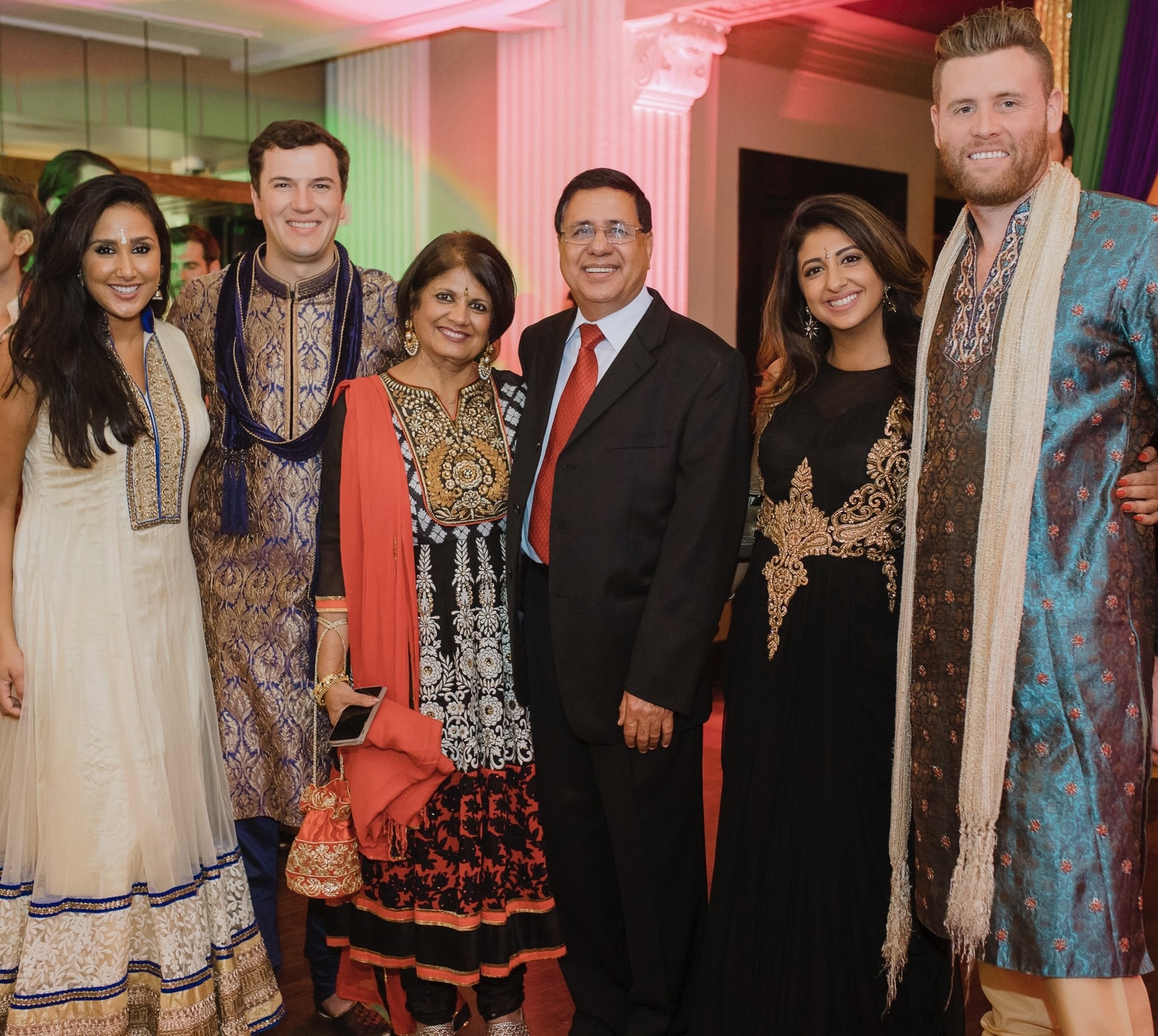
Courtesy of Megha McSwain
























